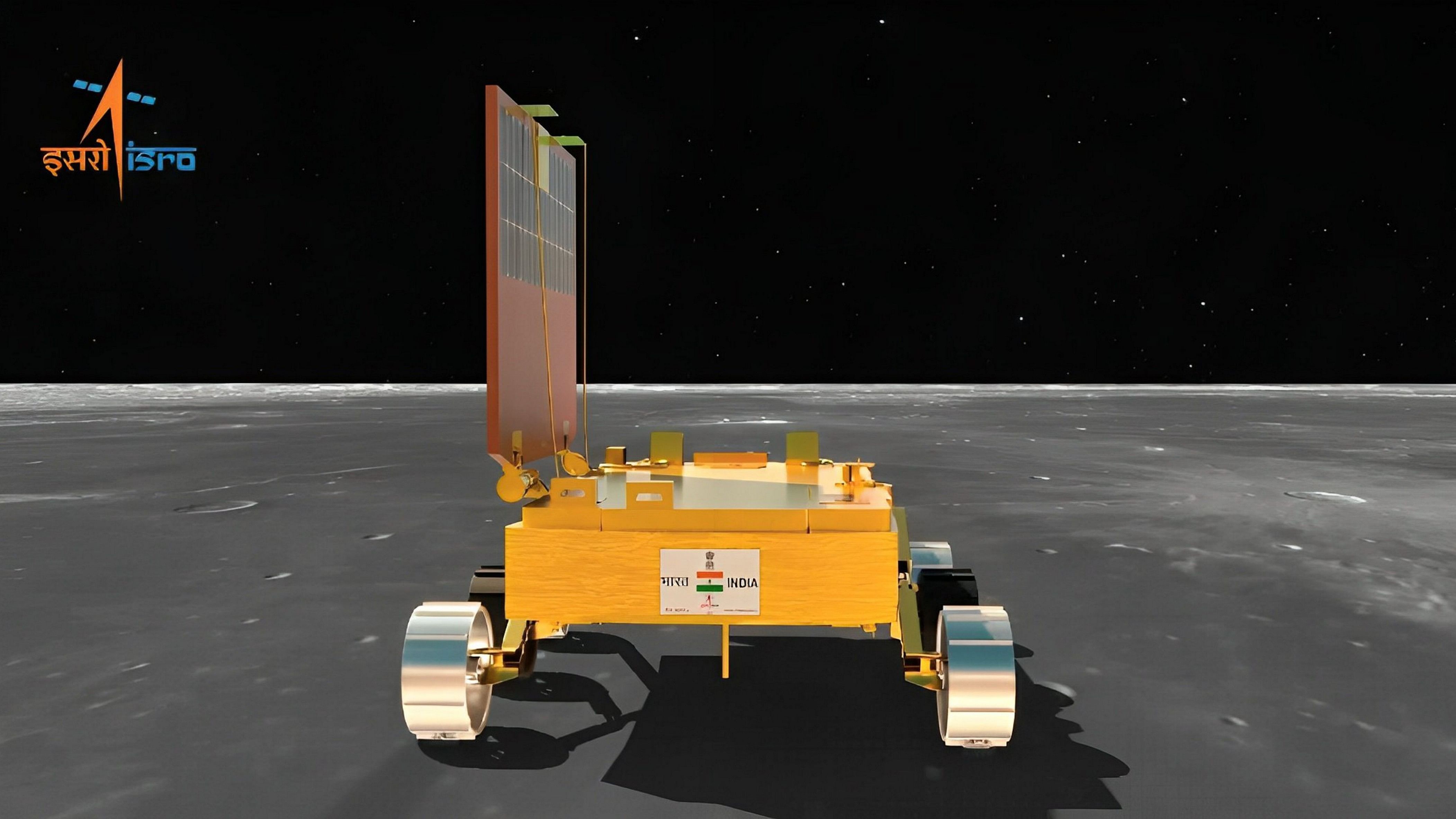
An illustration of Chandrayaan-3's Pragyan rover roaming on the lunar surface.
Credit: PTI Photo
Pragyan, Chandrayaan-3’s rover, has completed its assignments and is now “safely parked and set into Sleep mode” after covering 100 metres on the lunar surface and carrying out experiments on the chemical and elemental composition of the site where the spacecraft made a “soft and safe landing” on August 23.
The update came hours after the Indian Space Research Organisation (ISRO) released an image marking its movement around the landing location, while the agency’s Chairman S Somanath said the lander and the rover, in the final leg of their 14-day mission life, will be put to sleep as the lunar night sets in.
“The Rover completed its assignments. It is now safely parked and set into Sleep mode. APXS and LIBS payloads are turned off. Data from these payloads is transmitted to the Earth via the Lander,” the Indian Space Research Organisation (ISRO) said.
Currently, the battery is fully charged, the space agency said, adding that the solar panel is oriented to receive light at the next sunrise, expected on September 22, 2023.
“The receiver is kept on. Hoping for a successful awakening for another set of assignments! Else, it will forever stay there as India's lunar ambassador,” ISRO added.
After the launch of Aditya L1 at the Satish Dhawan Space Centre here, Somanath said the lander and rover are still functioning and are doing a lot of work.
“The good news is that the rover has moved almost 100 metres from the lander, and we are going to start the process of making both of them sleep in the coming one or two days because it has to withstand the night,” Somanath added.
Earlier this week, the Laser-Induced Breakdown Spectroscopy (LIBS) instrument onboard Chandrayaan-3 Rover made the first-ever in-situ measurements on the elemental composition of the lunar surface near the south pole.
“These in-situ measurements confirm the presence of Sulphur (S) in the region unambiguously, something that was not feasible by the instruments onboard the orbiters,” the agency had said.
The collected plasma light is spectrally resolved and detected by detectors such as Charge Coupled Devices. Since each element emits a characteristic set of wavelengths of light when it's in a plasma state, the elemental composition of the material is determined, ISRO said.
Another instrument onboard the Rover also confirmed the presence of Sulphur (S) in the region, through another technique.